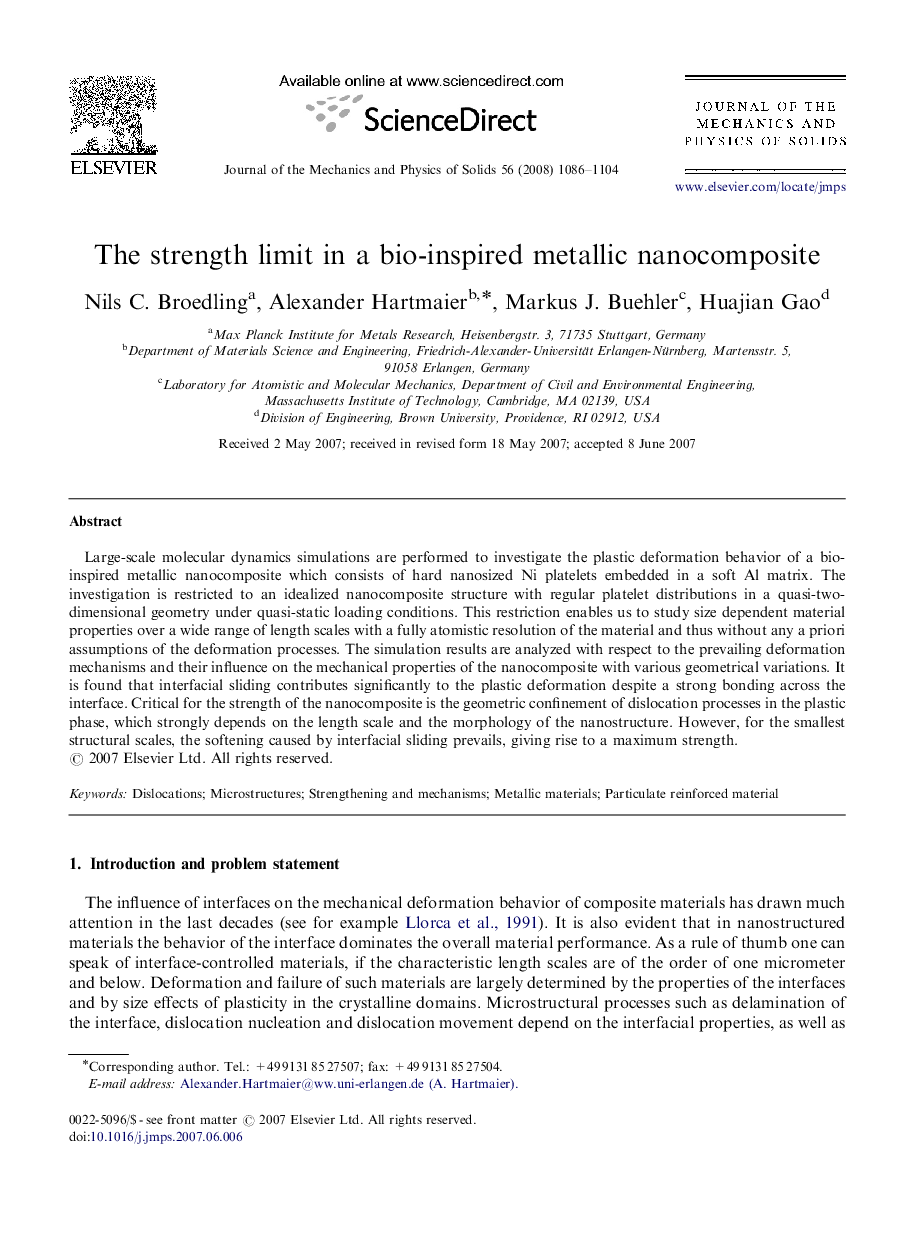| Article ID | Journal | Published Year | Pages | File Type |
|---|---|---|---|---|
| 796999 | Journal of the Mechanics and Physics of Solids | 2008 | 19 Pages |
Large-scale molecular dynamics simulations are performed to investigate the plastic deformation behavior of a bio-inspired metallic nanocomposite which consists of hard nanosized Ni platelets embedded in a soft Al matrix. The investigation is restricted to an idealized nanocomposite structure with regular platelet distributions in a quasi-two-dimensional geometry under quasi-static loading conditions. This restriction enables us to study size dependent material properties over a wide range of length scales with a fully atomistic resolution of the material and thus without any a priori assumptions of the deformation processes. The simulation results are analyzed with respect to the prevailing deformation mechanisms and their influence on the mechanical properties of the nanocomposite with various geometrical variations. It is found that interfacial sliding contributes significantly to the plastic deformation despite a strong bonding across the interface. Critical for the strength of the nanocomposite is the geometric confinement of dislocation processes in the plastic phase, which strongly depends on the length scale and the morphology of the nanostructure. However, for the smallest structural scales, the softening caused by interfacial sliding prevails, giving rise to a maximum strength.
